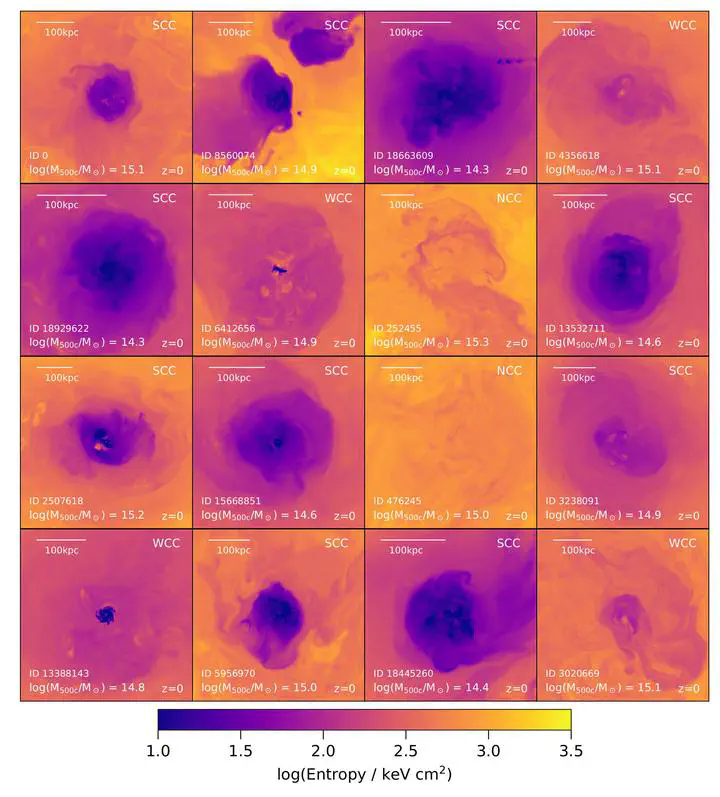The Heart of Galaxy Clusters: Demographics and Physical Properties of Cool-Core and Non-Cool-Core Halos in the TNG-Cluster Simulation
 Lehle+2023
Lehle+2023Abstract
We analyze the physical properties of the gaseous intracluster medium (ICM) at the center of massive galaxy clusters with TNGCluster, a new cosmological magnetohydrodynamical simulation. Our sample contains 352 simulated clusters spanning a halo mass range of 1e14 < M500c/Msun < 2 x 1e15 at z = 0. We focus on the proposed classification of clusters into cool-core (CC) and non-cool-core (NCC) populations, the z = 0 distribution of cluster central ICM properties, and the redshift evolution of the CC cluster population. We analyze resolved structure and radial profiles of entropy, temperature, electron number density, and pressure. To distinguish between CC and NCC clusters, we consider several criteria: central cooling time, central entropy, central density, X-ray concentration parameter, and density profile slope. According to TNG-Cluster and with no a-priori cluster selection, the distributions of these properties are unimodal, whereby CCs and NCCs represent the two extremes. Across the entire TNG-Cluster sample at z = 0 and based on central cooling time, the strong CC fraction is fSCC = 24%, compared to fWCC = 60% and fNCC = 16% for weak and non-cool-cores, respectively. However, the fraction of CCs depends strongly on both halo mass and redshift, although the magnitude and even direction of the trends vary with definition. The abundant statistics of simulated high-mass clusters in TNG-Cluster enables us to match observational samples and make a comparison with data. The CC fractions from z = 0 to z = 2 are in broad agreement with observations, as are radial profiles of thermodynamical quantities, globally as well as split for CC versus NCC halos. TNG-Cluster can therefore be used as a laboratory to study the evolution and transformations of cluster cores due to mergers, AGN feedback, and other physical processes.